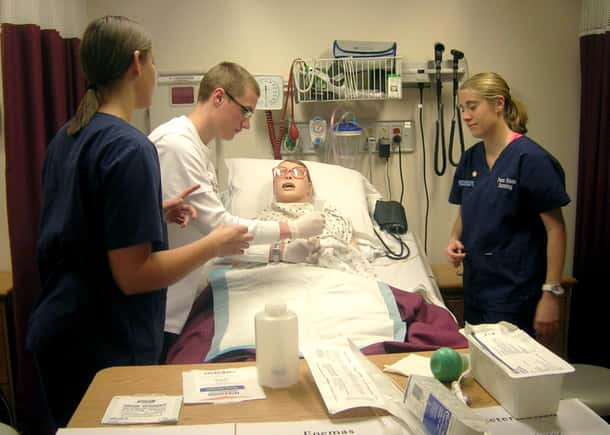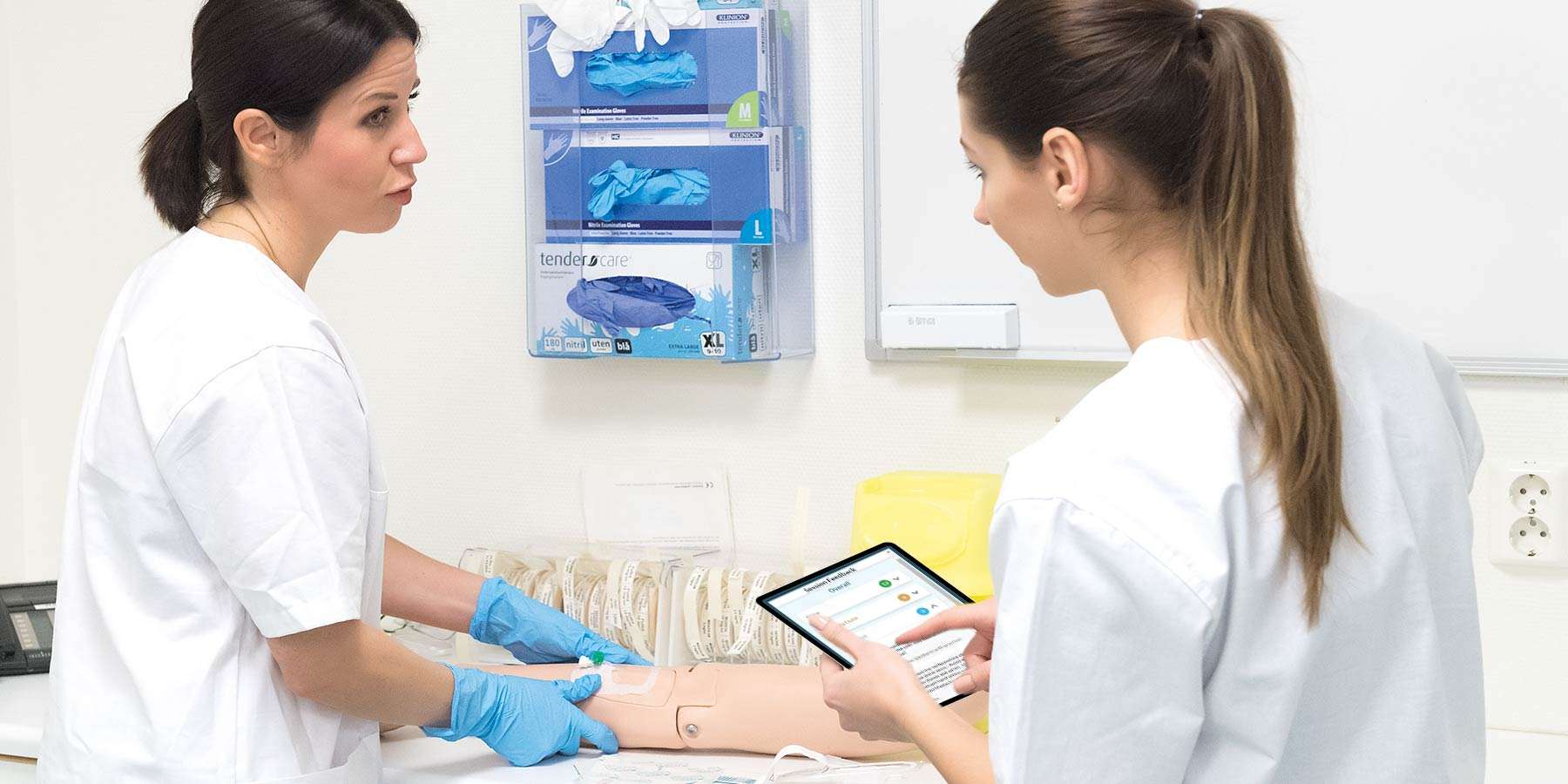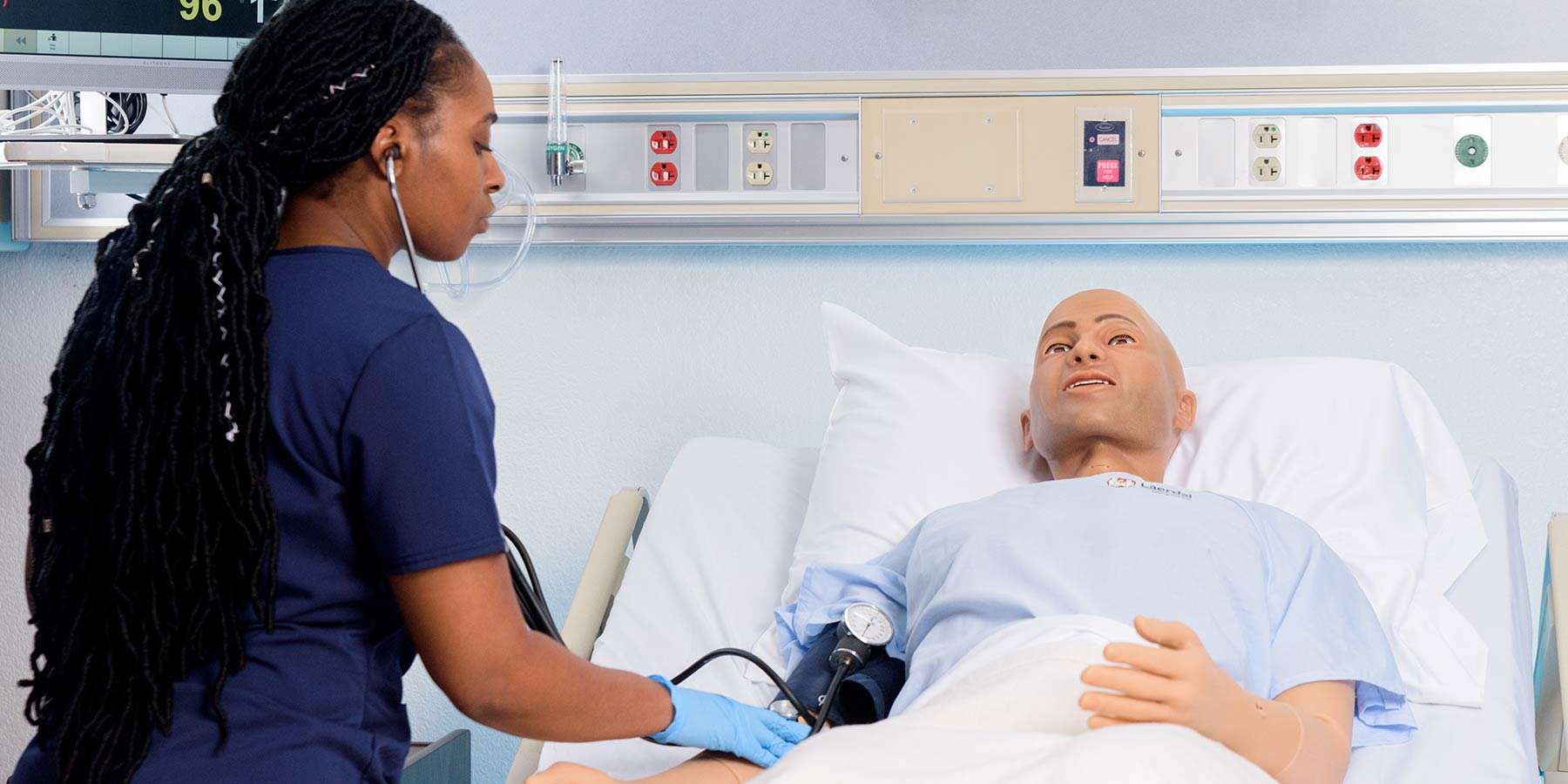How Insights Help Advance Nursing Skills Competence
Customer Story

Customer Story

Using SimCapture and SimCapture for Skills helped Penn State University change their approach to skills mastery by identifying gaps and facilitating deliberate practice using a peer-to-peer learning method.

Pennsylvania State University admits about 150 students a year to their traditional prelicensure baccalaureate program.
The challenge
Nursing programs are facing growing pressure to alleviate the ongoing nursing shortage and effectively prepare their graduates for today’s healthcare realities. To help ensure new nurse readiness, the Ross and Carol Nese College of Nursing at Pennsylvania State University has recently placed a focus on capturing performance data in their nursing skills lab.
Christopher Garrison, PhD, RN, CNS, CHSE, Simulation Lab Director and Associate Teaching Professor at Penn State, recognized that this data could play a key role in gauging student competence and helping faculty make strategic decisions on a programmatic or curricular level.
- Christopher Garrison, PhD, RN, CNS, CHSE
Director, Associate Teaching Professor, Pennsylvania State University

Like many other nursing simulation programs, Penn State had traditionally measured the success of their program using student satisfaction surveys. While the surveys helped to address Kirkpatrick Level 1 by measuring students’ reactions to the learning, this data didn’t provide the visibility into competence that they needed.
"I think one of the challenges in the simulation community is that, typically, when we think of collecting evaluation data, a lot of what’s been collected is at the level of student satisfaction and is not actual student performance data," Chris explains. "But we started to realize [that] we really needed to go beyond that. We needed to look at what the actual learning outcomes were and what our learners were accomplishing."
He and his team wanted to start collecting and analyzing more robust data on learning outcomes. "We wanted something objective and valid to make decisions on," he says. "[And] we really wanted to have [a] platform to be able to capture and analyze that data."
Additionally, with the new AACN Essentials requiring competency-based education, Chris and his colleagues knew they would need this data to document how students were meeting those competencies.
The solution

Once Chris and his team started gathering some performance data from their high-fidelity simulation scenarios, actionable insights soon began to emerge.
They utilized the Creighton Competency Evaluation Instrument (C-CEI®), which is a valid evaluation tool that gauges the effectiveness of clinical learning in simulation learning environments. The instrument focuses on 22 general nursing behaviors across four areas: assessment, communication, clinical judgment, and patient safety. “I find it really valuable because it’s objective,” Chris explains.
They embedded the Creighton Instrument directly into SimCapture, a simulation management system. This allowed them to easy collect and analyze the evaluation data within the SimCapture platform.
The data from the simulation scenarios revealed that students were demonstrating strong competencies in some skills. But upon digging deeper, they found that the students weren’t where they should be in other areas – such as some of the elements of safe medication administration and performing procedures correctly.
These insights left the team asking themselves, "How can we get our students to the competency level that they need to be for practice?"
It was time to rethink their approach to teaching skills.

The data they gathered with the Creighton instrument and SimCapture allowed Chris and the team to get a closer look at which specific skills might require more repetitive practice. They wanted to increase practice opportunities in a structured way, so they brought in SimCapture for Skills – a solution that combines the effectiveness of the peer-to-peer learning methodology with digital assessment and evaluation tools.
With SimCapture for Skills, students could train repeatedly on fundamental nursing skills and give each other feedback. Building rubrics into the SimCapture for Skills platform ensured that peers were giving each other accurate feedback based off the rubrics. Having students assess each other for the different key elements identified in the rubric was beneficial because it reinforced the best practice. "They're actually getting better-quality practice and better-quality feedback," he says.
SimCapture for Skills also provided Chris and his team with the performance data and insights they needed to tweak their teaching. Available reports include performance indicators on the participant and cohort levels.
"The data is really helpful in terms of looking at, where are your students practicing? What is the performance level?" he explains. "And then you’re able to adjust how you’re teaching different skills when you identify gaps."

In addition to increasing the structure of practice time, Chris and his colleagues recognized that these practice opportunities needed to be threaded across the curriculum and not simply "front-loaded” at the beginning.
"The vast majority of skills were loaded into the Fundamentals course," he shares. "I think it’s a faulty assumption that once you check somebody off as being competent in your Fundamentals or Foundations course, that they maintain that competence throughout the curriculum." While these skills would likely be revisited during clinicals, he explains, clinical instructors might be guiding the students as they perform skills like medication administration and sterile technique.
"The interesting thing about looking at simulation data is that we don’t guide them. We expect them to practice independently because there’s no risk to patients. So that enables us to identify gaps and then close those gaps prior to graduation so that they can be safe and effective practitioners.”
Over time, Chris and the team have gradually been embedding practice opportunities for critical skills throughout the curriculum to provide the reinforcement necessary for students to master them.
By harnessing the power of data to drive their decision-making and taking a more deliberate approach to skills competence, Penn State has successfully elevated the way they’re preparing their students for practice.
From skills practice to high-fidelity simulations, performance data can help you make key programmatic or curricular decisions to ensure student readiness.
Adding more structure to your practice time using a peer-to-peer methodology can elevate the quality and efficacy of skills practice opportunities.
Taking a deliberate approach of embedding skills across the curriculum gives your students opportunities to maintain and redevelop skills competence.
If you’re interested in starting down the path of collecting and utilizing more data in your program, Chris recommends "starting small and building on your wins."
Start with where your program is at right now and where the needs are. The [SimCapture] platform is very helpful in enabling you to collect a variety of actual outcome data on your students’ performance. The platform provides a really good way to organize and capture that data. But, you have to have a strategic plan for how you’re going to use it. If you just collect the data and then don’t do anything with it, it’s not going to really help improve your program."
